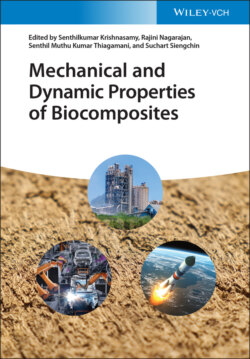Читать книгу Mechanical and Dynamic Properties of Biocomposites - Группа авторов - Страница 13
1.3 Hybrid Natural Fiber‐Reinforced Polymeric Biocomposites
ОглавлениеFiber hybridization could offer a further alternative in composites. Hybrid composites are derived by a combination of two or more various fiber types in a common matrix [10]. The fibers can be arranged in different layer pattern/orientations and stacking sequences. Figure 1.2 presents some common arrangements (layering patterns) of natural FRP hybrid composites. This introduces wider spread in their properties than in the regular composite materials, which comprises only one kind of reinforcement. It also enables manufacturing engineers to channel the properties of the composite to the required structural properties. This can possibly be achieved once the hybrid composite behavior can be predicted from the constituent composites.
Operationally, producing hybrid natural FRP composites suggests an intermediate intervention to reduce the negative environmental impact of glass and carbon (synthetic) fibers on the environment, by partially replacing the glass and carbon fibers with such alternatives as the vegetable fibers jute, flax, hemp, kenaf, sisal, among others [12, 13]. In these substitutions, the limits are revealed by simulating the service performance in such a dynamic testing, including fatigue and impact [14, 15].
Figure 1.2 Schematic illustration of different orientations and stacking sequences of natural FRP hybrid composites.
Source: Refs. [9, 11]. © 2012; John Wiley and Sons.
Moreover, hybrid biocomposites refer to composites in which two or more different biofibers (natural fibers) are combined in a matrix, or a mixture of natural fibers with synthetic fibers in a matrix [4]. One synthetic fiber commonly used for improving the mechanical response in natural FRP composites is glass or carbon fibers. Several types exist for hybrid composites. These types are dependent on the material constituent mixture [16, 17].
For instance, Figure 1.3 shows higher mechanical properties of unaged hybrid flax/basalt FRP composite sample A, when compared with single or non‐hybrid flax FRP composite. However, the impact strength property of the aged hybrid counterpart samples B, C, D, and E changed insignificantly after 15, 30, 45, and 60 aging days of salt‐fog environment conditions (Figure 1.3c) of the hybrid types. Additional mechanical behaviors of some FRP hybrid biocomposites are presented later in Table 1.5 by considering their natural/natural fiber combined reinforcements.
In preparing hybrid FRP composites, the rule of mixture comes to play, while the volume fraction can be obtained using Eqs. (1.1)–(1.6) [8].
(1.2)
(1.3)
Figure 1.3 Improved mechanical properties of hybrid flax–basalt fibers FRP composites, depicting (a) stress–strain, (b) modulus–strain curves, and (c) impact strengths of aged and unaged biocomposites.
Source: Fiore et al. [18]. © 2016, Elsevier.
(1.4)
(1.5)
where Vf denotes total reinforcement volume fraction, Vc1 and Vc2 represent the first and second reinforcement relative volume fractions, Vf1 and Vf2 stand for the first and second fiber volume fractions, ρc and ρf designate the densities of the composites and fiber, while Wf indicates the weight of the fiber. The methodology for preparing and characterizing hybrid fiber‐reinforced PMCs as well as its applications is presented in Figure 1.4.
However, the present chapter does not cover all the methodologies shown in Figure 1.4 in detail, because the scope of this chapter is not manufacturing processes and techniques of natural FRP composite materials.
